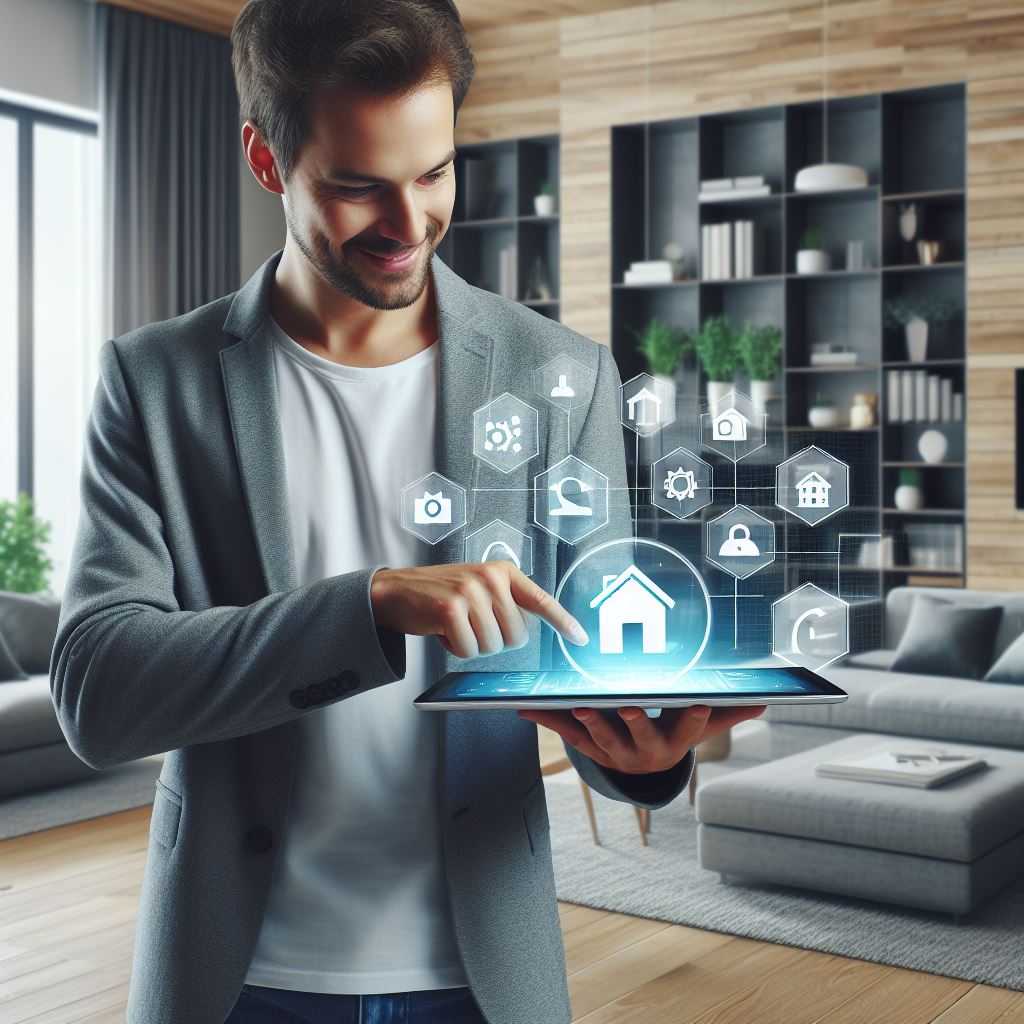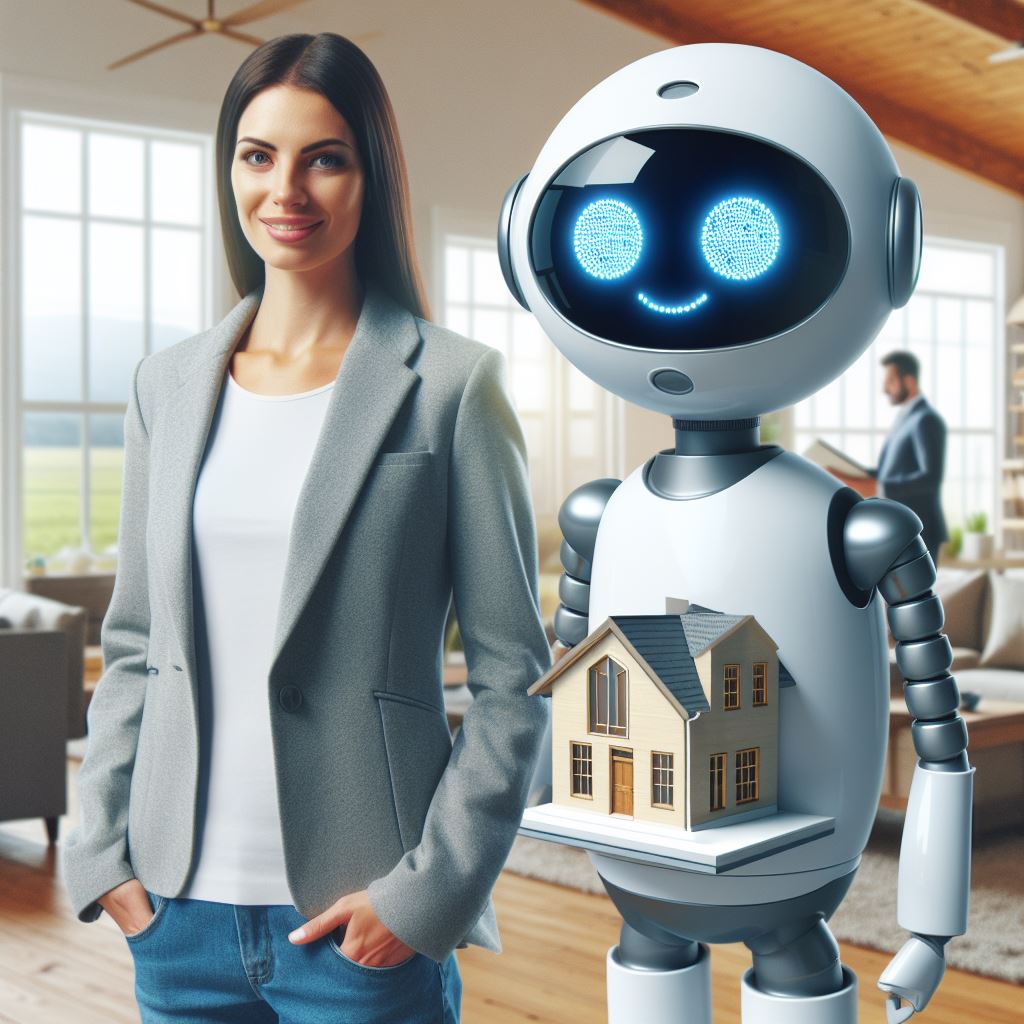Introduction
User-friendly property management interfaces have become crucial in today’s digital age.
With the rapid advancement in technology, property managers need interfaces that are intuitive and easy to navigate.
These interfaces play a vital role in enhancing the overall user experience for property managers.
They provide a seamless platform that enables them to efficiently manage their properties, tenants, and financial records.
By incorporating user-friendly interfaces, property managers can streamline their day-to-day tasks.
These interfaces offer features such as automated rent collection, tenant communication, and maintenance requests, resulting in increased efficiency and reduced administrative burden.
Moreover, user-friendly interfaces simplify the process of generating financial reports and tracking expenses, allowing property managers to make informed decisions.
They can easily monitor vacancies, occupancy rates, and rental income, helping them optimize their property portfolios.
Additionally, these interfaces improve communication between property managers and tenants.
Tenants can access their accounts, make rent payments, and request maintenance services through a user-friendly interface.
This simplifies the tenant experience and reduces the need for manual intervention, enhancing overall satisfaction.
In fact, user-friendly property management interfaces have become essential tools in the industry.
They provide property managers with efficient and effective solutions to effectively manage their properties, enhance tenant satisfaction, and optimize their financial performance.
As technology continues to evolve, it is crucial for property management companies to invest in user-friendly interfaces to stay ahead in the competitive market.
Why user-friendly property management interfaces matter
Property management interfaces are an essential tool for property managers.
These interfaces serve as a valuable resource to help property managers streamline their tasks and processes.
They enhance the overall user experience, increase productivity, save time, and improve communication and collaboration among team members.
Enhance user experience for property managers
- User-friendly property management interfaces provide an intuitive and easy-to-use platform.
- Intuitive interfaces reduce the learning curve and allow property managers to quickly adapt to new systems.
- Clear navigation menus and well-organized features make it easier to locate and access necessary information.
- Responsive interfaces that work well across different devices add convenience and flexibility for property managers on the go.
Help property managers streamline tasks and processes
- Property management interfaces offer centralized platforms where property managers can access and manage all relevant data.
- From tenant information to financial records, these interfaces provide a comprehensive overview of property management operations.
- Automation tools within the interfaces allow property managers to automate repetitive tasks, such as generating reports or sending notifications.
- Integration with other property management software, such as accounting or maintenance systems, further streamlines processes.
Increase productivity and save time for property management professionals
- A user-friendly interface enables property managers to complete tasks efficiently and effectively.
- Quick access to critical information and streamlined workflows eliminate unnecessary steps and reduce time wasted on manual processes.
- Automated reminders and notifications keep property managers informed of key deadlines and upcoming tasks.
- Fast and accurate reporting features allow property managers to generate actionable insights promptly.
Improve communication and collaboration among team members
- Property management interfaces facilitate seamless communication between property managers and team members.
- Real-time messaging features and shared document repositories enhance collaboration, enabling efficient information exchange.
- Task assignment and tracking tools promote accountability and transparency within the team.
- Shared calendars and scheduling functionalities make it easier to coordinate meetings and appointments.
In fact, user-friendly property management interfaces play a vital role in enhancing the user experience for property managers.
They help streamline tasks and processes, increase productivity, save time, and improve communication and collaboration among team members.
Investing in a well-designed interface can bring significant benefits to property management professionals and their overall operations.
Read: Integrating Blockchain in Property Management
Key features of user-friendly property management interfaces
A user-friendly property management interface is essential for ensuring efficient and effective management of properties.
Such interfaces have several key features that enhance usability and simplify task management for property managers.
Intuitive Design and Navigation
One of the key features of user-friendly property management interfaces is their intuitive design and navigation.
These interfaces are designed to be easily understood and navigated by users, regardless of their technical expertise.
This ensures that property managers can easily access the necessary features and perform their tasks without any confusion or frustration.
Clear and Organized Property Information
User-friendly property management interfaces also prioritize clear and organized presentation of property information.
This includes detailed property descriptions, images, rental history, and other relevant data.
By organizing this information in a user-friendly manner, property managers can quickly access the necessary details and make informed decisions.
Integrated Communication Tools
To facilitate seamless communication between property managers, tenants, and other stakeholders, user-friendly interfaces integrate communication tools such as messaging systems and email notifications.
This enables property managers to easily communicate with tenants, address their concerns, and keep all parties informed about important updates and developments.
Customizable Workflows and Task Management
User-friendly property management interfaces offer customizable workflows and task management capabilities.
This allows property managers to create and assign tasks, track their progress, and set deadlines.
By customizing workflows to align with their specific needs, property managers can ensure that tasks are completed efficiently and in a timely manner.
Real-Time Updates and Notifications
User-friendly interfaces provide real-time updates and notifications, ensuring property managers stay up-to-date with all relevant information.
This includes notifications about new tenant applications, lease expirations, maintenance requests, and other important events.
Real-time updates enable property managers to respond promptly and address issues in a timely manner.
Robust Reporting and Analytics Capabilities
User-friendly property management interfaces offer robust reporting and analytics capabilities, allowing property managers to generate comprehensive reports on various aspects of property management.
These reports provide valuable insights and help in making data-driven decisions, such as analyzing rental trends, monitoring financial performance, and identifying areas for improvement.
In short, user-friendly property management interfaces are designed to simplify and streamline property management tasks.
These interfaces incorporate key features such as intuitive design and navigation, clear and organized property information, integrated communication tools, customizable workflows and task management, real-time updates and notifications, and robust reporting and analytics capabilities.
By utilizing such interfaces, property managers can enhance their efficiency, productivity, and overall management of properties.
Read: Security Features in Property Management Software

Benefits for property managers
Property managers play a crucial role in ensuring the smooth operation and profitability of real estate assets.
They are responsible for various tasks, including property maintenance, tenant management, financial reporting, and more.
To efficiently carry out these responsibilities, property managers can greatly benefit from user-friendly property management interfaces. Here are some of the advantages:
Increased efficiency and productivity
- User-friendly property management interfaces streamline tasks, enabling property managers to work more efficiently.
- Intuitive navigation and simplified workflows save time and reduce the chance of errors.
- Automated processes and notifications help property managers stay organized and on top of their responsibilities.
- Real-time access to information allows for quick decision-making and problem-solving.
Enhanced organization and task management
- User-friendly interfaces provide property managers with a centralized platform to manage all aspects of property operations.
- Tasks can be easily tracked, assigned, and prioritized, increasing accountability and productivity.
- Reminders and notifications ensure that important deadlines are met and nothing falls through the cracks.
- Integration with calendars and communication tools facilitates collaboration with team members and stakeholders.
Improved tenant and owner satisfaction
- A user-friendly interface improves communication between property managers, tenants, and property owners.
- Tenants can easily report maintenance issues and track the progress of their requests.
- Property owners can access real-time financial reports, occupancy rates, and other data-driven insights.
- Transparency and responsiveness increase trust and satisfaction, leading to long-term tenant and owner retention.
Better decision-making through data-driven insights
- User-friendly interfaces provide property managers with access to comprehensive data and analytics.
- Key performance indicators (KPIs) such as occupancy rates, rental income, and maintenance costs can be easily monitored.
- Data visualization tools enable property managers to identify trends, patterns, and areas for improvement.
- Strategic decisions, such as rent adjustments or property upgrades, can be made based on accurate and up-to-date information.
In essence, user-friendly property management interfaces offer numerous benefits for property managers.
By increasing efficiency, enhancing organization, improving tenant and owner satisfaction, and enabling data-driven decision-making, these interfaces empower property managers to effectively manage their responsibilities and optimize property performance.
Investing in a user-friendly property management system is a wise choice for any property management professional looking to stay ahead in the dynamic real estate industry.
Read: Blockchain’s Role in Real Estate Transparency
Case Studies or Examples of Successful User-Friendly Property Management Interfaces
Specific companies or software solutions that excel in providing user-friendly interfaces
In today’s fast-paced real estate landscape, property management interfaces play a pivotal role in streamlining operations and enhancing user experience.
Gone are the days of cumbersome, outdated systems.
Instead, property managers are turning to intuitive, user-friendly interfaces to simplify tasks and maximize efficiency.
Let’s delve into some prime examples of successful interfaces revolutionizing property management.
Their features, benefits, and success stories
One standout is Buildium, a cloud-based property management software renowned for its user-centric design and comprehensive features.
With Buildium, managers can effortlessly oversee tasks such as rent collection, maintenance requests, and tenant communication.
Its intuitive interface boasts customizable dashboards, allowing users to prioritize tasks and access key metrics at a glance.
Buildium’s success lies in its ability to streamline workflows, ultimately saving time and increasing productivity for property managers.
How these interfaces have improved property management processes
Another noteworthy example is AppFolio Property Manager, revered for its user-friendly interface and robust functionality.
Designed to cater to the diverse needs of property managers, AppFolio offers features such as online rent payments, vacancy tracking, and mobile access.
Its sleek interface simplifies complex tasks, empowering managers to navigate operations with ease.
Notably, AppFolio has garnered acclaim for its role in optimizing property management processes, leading to increased tenant satisfaction and higher retention rates.
Furthermore, Rentec Direct stands out as a beacon of user-friendliness in the property management realm.
Boasting a clean, intuitive interface, Rentec Direct offers a plethora of features tailored to streamline tasks such as accounting, tenant screening, and lease management.
Its user-friendly design enables property managers to stay organized and efficient, resulting in improved profitability and tenant relations.
These case studies underscore the transformative power of user-friendly property management interfaces.
By prioritizing usability and functionality, companies like Buildium, AppFolio, and Rentec Direct have revolutionized the industry landscape.
Through intuitive interfaces and comprehensive features, they have empowered property managers to optimize processes, enhance tenant experiences, and drive business success.
In a nutshell, the era of user-friendly property management interfaces is upon us, and the benefits are undeniable.
By embracing innovative solutions, property managers can navigate challenges with confidence, ultimately fostering growth and prosperity in the dynamic real estate market.
Read: Customizable Features in Property Management Apps
Best practices in implementing user-friendly property management interfaces
Implementing user-friendly property management interfaces requires careful consideration and strategic planning.
By following best practices, property managers can ensure that their software solution meets their needs and improves efficiency. Here are some key practices to keep in mind:
Conducting thorough research and due diligence before selecting a software solution
Conducting thorough research and due diligence before selecting a software solution is crucial.
By carefully evaluating different options, property managers can ensure that the chosen interface aligns with their unique needs and priorities.
Consider factors such as scalability, security, customization options, and integration capabilities. This research stage is essential for avoiding costly and time-consuming transitions in the future.
Involving property managers in the decision-making process
The insights and expertise of property managers are invaluable when it comes to selecting a user-friendly property management interface.
Involve them in the decision-making process to understand their pain points, challenges, and expectations.
Their input will help in identifying features that are essential for effective management and streamline daily operations.
By collaborating with property managers, you can design an interface that meets their expectations.
Providing comprehensive training and support to ensure proper utilization
Once a software solution is chosen, it is essential to provide comprehensive training and support.
Offering training sessions or tutorials will enable property managers to familiarize themselves with the interface’s functionalities and maximize its potential.
Additionally, ongoing technical support ensures that property managers can quickly resolve any issues they encounter.
A strong support system is critical for efficient and effective utilization of the software solution.
Regularly seeking feedback and making necessary improvements
Regularly seeking feedback from property managers is vital to continuously improve the user-friendliness of the interface.
Encourage property managers to provide their thoughts and suggestions regarding the software.
This feedback-driven approach will help identify pain points and areas for improvement.
Actively address user concerns and iterate on the interface based on their needs.
By prioritizing user feedback, you can create an interface that evolves with changing requirements.
Staying updated with technological advancements to leverage new features and functionalities
Staying updated with technological advancements is essential to leverage new features and functionalities.
Monitor the market for emerging trends and advancements in property management software.
By harnessing cutting-edge technologies, you can enhance user experience, automate repetitive tasks, and optimize workflow efficiencies.
Regular updates and improvements will keep your property management interface competitive and ensure that it remains user-friendly.
Therefore, implementing user-friendly property management interfaces requires careful consideration of best practices.
Conduct thorough research, involve property managers, provide comprehensive training and support, seek feedback, and stay updated with technological advancements.
By following these practices, property managers can maximize the usability and effectiveness of their chosen software solution.
Future trends and developments in user-friendly property management interfaces
As technology continues to evolve at a rapid pace, user-friendly property management interfaces are also experiencing significant advancements.
These developments aim to enhance usability, efficiency, and overall user satisfaction.
In this section, we will explore some of the future trends and developments in this field.
Integration of artificial intelligence and machine learning
One of the most prominent trends in user-friendly property management interfaces is the integration of artificial intelligence (AI) and machine learning (ML).
These technologies enable systems to learn from user behavior and make data-driven decisions, resulting in improved user experiences.
Using AI and ML algorithms, property management interfaces can analyze patterns in user preferences and automate repetitive tasks.
This includes tasks such as rent collection, maintenance ticketing, and lease renewals.
By automating these processes, property managers can save time and focus on more strategic aspects of their work.
Mobile-friendly interfaces and applications
With the increasing use of smartphones and tablets, property management interfaces are becoming more mobile-friendly.
This allows users to access and manage their properties on the go, providing convenience and flexibility.
Mobile applications offer features such as remote property monitoring, real-time notifications, and easy communication with tenants.
This accessibility empowers property managers to stay connected and address issues promptly, leading to better tenant satisfaction and overall operational efficiency.
Enhanced automation and integration capabilities
Automation and integration capabilities are crucial for user-friendly property management interfaces.
As technology advances, these capabilities are becoming more sophisticated and comprehensive.
Property management interfaces now seamlessly integrate with various third-party applications and platforms.
This integration allows for streamlined workflows, efficient data sharing, and comprehensive reporting.
For example, interfaces can integrate with accounting software to automate and reconcile financial transactions, simplifying bookkeeping for property managers.
Improved data security and privacy measures
Data security and privacy are paramount in property management interfaces due to the sensitive nature of property-related information.
In response to growing concerns, future developments focus on enhancing data security measures.
Property management interfaces are implementing advanced encryption techniques to protect sensitive data from unauthorized access.
Additionally, user authentication measures such as two-factor authentication provide an extra layer of security.
These measures ensure that property managers and tenants have peace of mind when using the interfaces.
User-friendly property management interfaces are continually evolving to meet the needs of property managers and tenants.
The future trends and developments discussed in this section, including the integration of AI and ML, mobile-friendliness, enhanced automation and integration capabilities, and improved data security, promise to revolutionize property management processes and provide a seamless and efficient user experience.
By embracing these advancements, property managers can streamline their operations, improve tenant satisfaction, and ultimately achieve their business goals more effectively.
Conclusion
User-friendly property management interfaces play a crucial role in the success of property managers.
These interfaces offer numerous benefits, including time-saving features, improved efficiency, and enhanced customer satisfaction.
It is vital for property managers to prioritize and invest in user-friendly interfaces to stay competitive in the industry.
By doing so, they can streamline their operations, maximize their productivity, and provide a seamless experience for both property owners and tenants.
Therefore, property managers are encouraged to explore and adopt user-friendly property management interfaces.
By embracing these interfaces, they can revolutionize their workflow and ensure long-term success.
It is an investment that will pay off in terms of increased profitability and improved overall management efficiency.
So, don’t hesitate. Take the leap and explore the world of user-friendly property management interfaces.
Your business will thank you for it!




